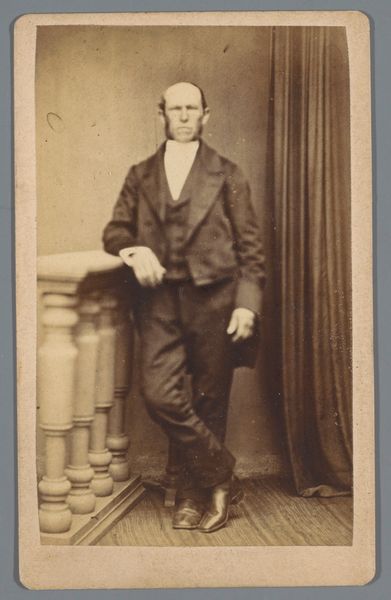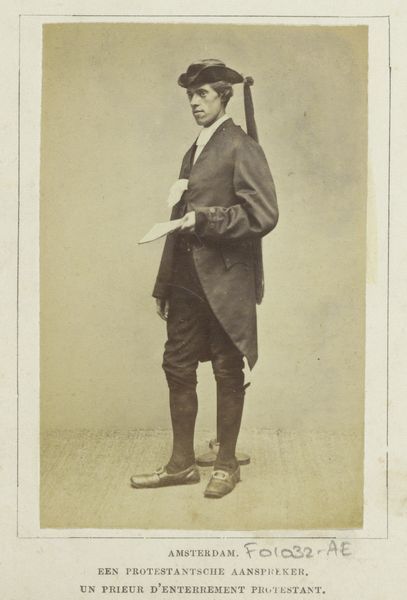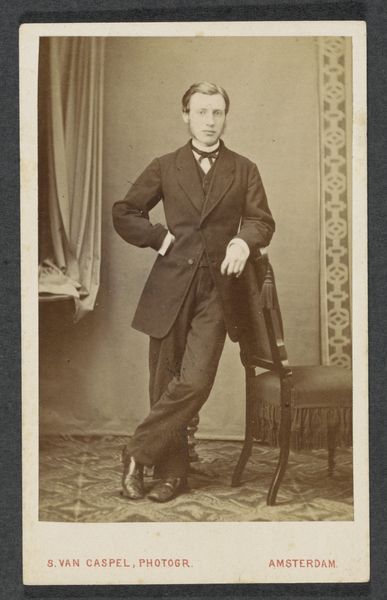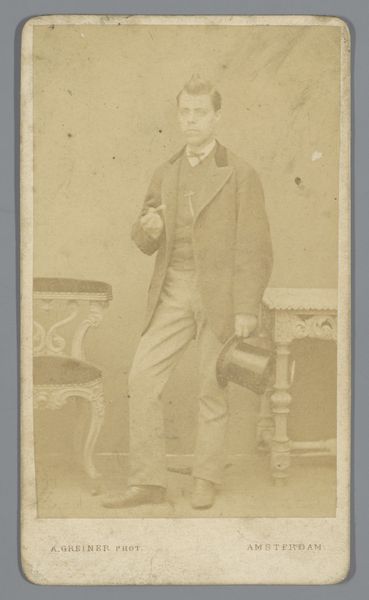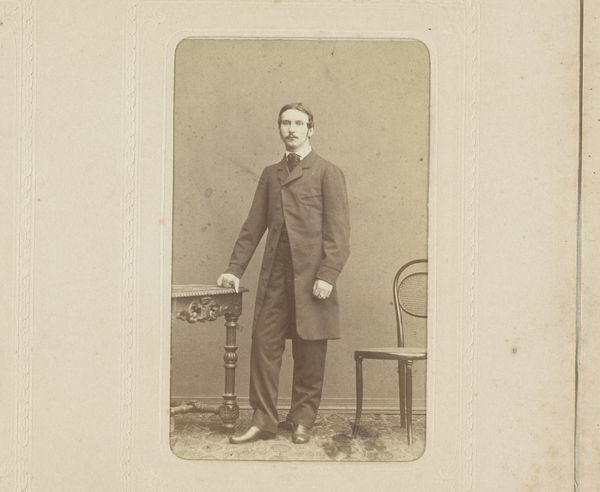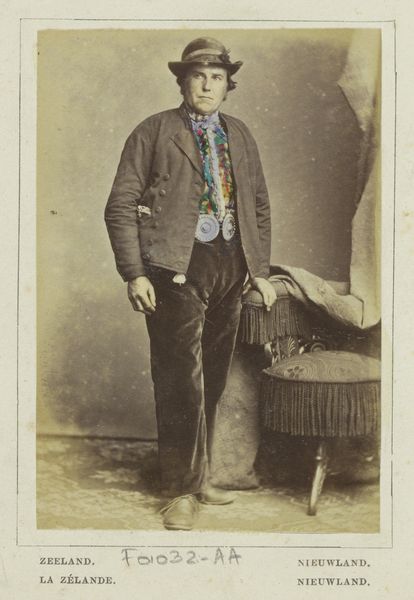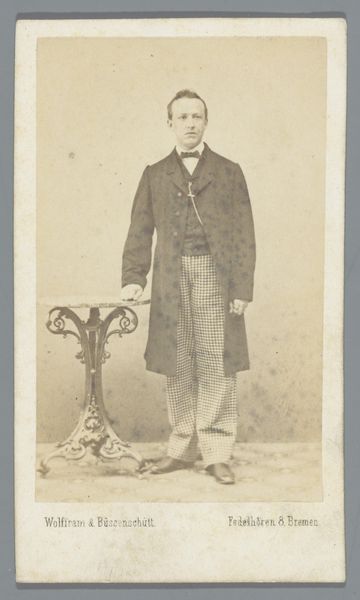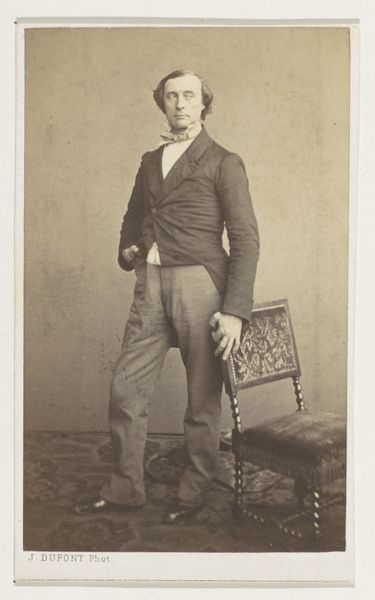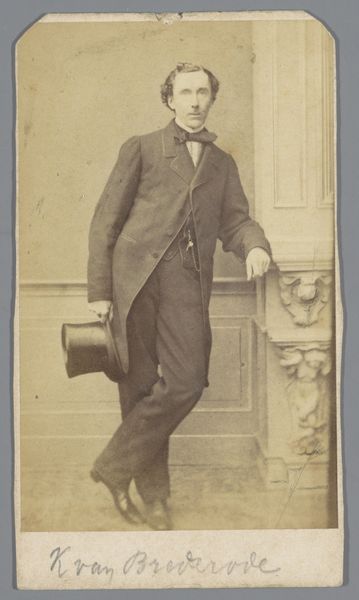
#
pencil drawn
#
aged paper
#
toned paper
#
vintage
#
photo restoration
#
charcoal drawing
#
historical photography
#
old-timey
#
19th century
#
watercolor
Dimensions: height 167 mm, width 103 mm
Copyright: Rijks Museum: Open Domain
Curator: This photograph, entitled "Portret van een Amsterdamse aanzegger," roughly translated as "Portrait of an Amsterdam Town Crier," dates from approximately 1870 to 1890. It resides here at the Rijksmuseum. What are your initial thoughts? Editor: It's…quaint. There's a staged quality, isn’t there? The way he's posed, holding the letter, the lighting… It feels carefully constructed. Curator: Indeed. Looking closely, we see the print details; it was published by A. Jager of Damrak, Amsterdam. We can discern the methods and resources used for widespread photographic prints during this period and what it represents in a social sense, like how the industrial availability of print-making technologies contributed to new artistic modes of representation. Editor: Agreed, and thinking structurally, consider the stark contrast between his dark clothing and the toned paper— the browns against beige create a visual drama, emphasizing his figure. That hat! The line of it is echoed and counter-pointed by the rectangular form of the paper. What a curious shape and embellishment! Curator: Exactly, his outfit suggests he represents, performs even, a certain form of labor. I agree there are elements of theatricality in the performance, especially if you look closely at how this announcement and related communications and dissemination was made public, or even its function of mourning within the socio-cultural context of 19th century Amsterdam society. Editor: True. Formally, the costume acts as a kind of symbolic shorthand. It marks him, immediately identifiable and his profession. I read the curve of the brimmed hat, a semiotic symbol which evokes similar characters and announces the social importance to anyone seeing this image or meeting him in person at the time of creation and performance. It visually translates what he provides to his community. Curator: Absolutely, and seeing that photographic documentation, and even something simple such as its "vintage" tone or aged material itself, lets us see not only labor and materiality, but also that which consumes it – time itself. Editor: An apt thought. Well, all things considered, it presents some compelling structural choices of visual design while acting as social document. Curator: I concur, an illuminating artifact for examining both labor and art, which really invites deeper thought of materiality and art-making itself, even now.
Comments
No comments
Be the first to comment and join the conversation on the ultimate creative platform.


